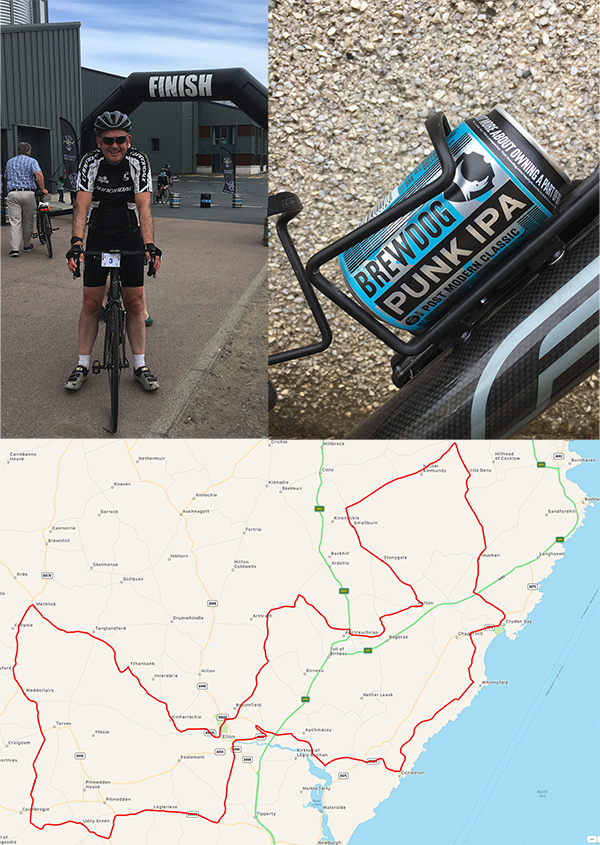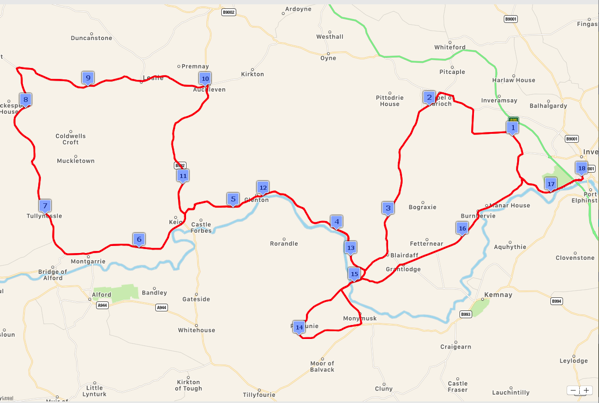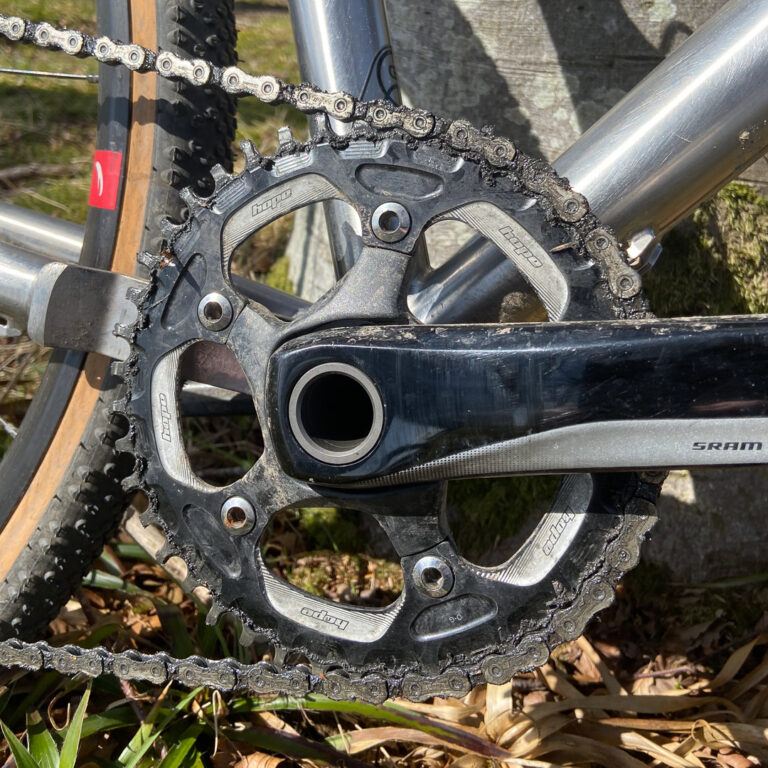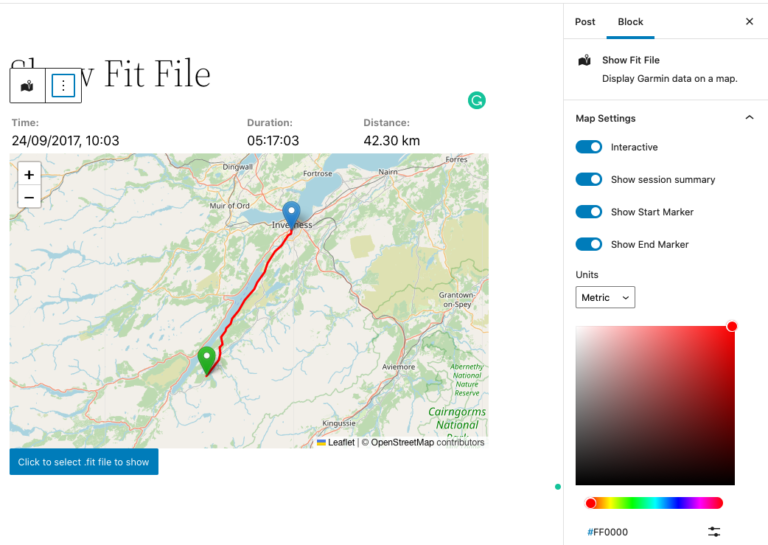Wahoo Elemnt Roam Vs Garmin Edge 530
Wahoo’s Elemnt Roam and Garmin’s Edge 530 are both companies’ latest GPS bike computers.
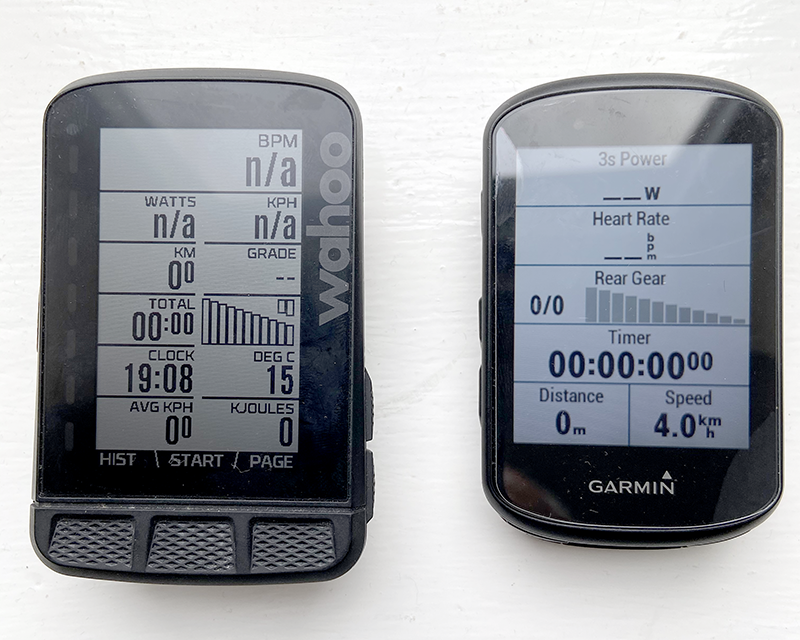
I’ve had a Wahoo Elemnt Roam since September last year and used it extensively on my winter bike during the colder months. However, due to some problems with the Wahoo and my SRM power meter (see notes at the end), I moved to a Garmin Edge 530 when the weather got a bit warmer and my summer bike came of out storage. They’re both great products, but quite different in their setup and use. Here are some of my thoughts after a few months of using both.
Initial Setup
Wahoo Elemnt uses a phone app to set up the device. This lets you choose which fields to be displayed, connect to the WiFi network, and configure any cloud services such as dropbox or Strava. Once the initial setup is complete, you don’t really need to use the app, although it does provide quite a good summary of each ride’s data.
The Edge 530 needs to be mostly configured on the device itself. This is quite a bit more fiddly than using the Wahoo app.
Adding sensors to be devices is pretty straight-forward. Go to the search for a new sensor, then add it once it’s found. Renaming the sensors is an absolute joy on the Elemnt using the phone app, compared with the Edge, when you need to select each letter on the device screen.
The Elemnt also takes considerably longer than the Edge to power up, probably because of its Android roots.
Display Setup
The Elemnt has a set of screens that can be cycled through using the Page button. Each screen has the concept of ‘Zooming’ to show more or fewer fields on the screen, with the size of each field shrinking to allow more to be displayed. If you use different bikes with different sensor types (i.e. one bike has a power meter & Di2, while the other doesn’t), you’ll find yourself setting up separate screens for each one. This isn’t quite as ’clean’ as to how it’s handled on the Edge.
The Edge has Profiles that let you have a set of screens for each setup, i.e., Road Bike, Mountain Bike, etc. Each profile can have its own set of display fields. There’s also a number of ‘screens’ for each profile that you can cycle through using the buttons on the size of the device or using the hood buttons on Di2 shifters.
Garmin also has CIQ fields which are mini-apps that run on the device and can read data – these range from novelty ones, such as the number of beers earned, or slices of pizza burned off, to more advanced, such as specialised training metrics beyond those built-in to the device.
Getting the Data off the Device
The Edge has several ways to access its data: the device has Wi-Fi and will upload to Garmin Connect as soon as it can connect to one of the specified networks after a ride; it can upload via iPhone app, or it can be connected to a computer and appear as a USB drive – Garmin Express software handles uploading to Garmin Connect, or the data files can be accessed and uploaded to cloud services manually.
The first two methods are great when Garmin’s servers are running, but, as millions found out recently, when they’re down, it’s really hard to access your data. If you use Strava or Training Peaks, for example, then your data needs to go to Garmin’s servers first before it’s sent onto the services. This isn’t the case with the Elemnt.
The Elemnt also has Wi-Fi built-in and can upload to a number of different services, including Training Peaks and Strava. It can also upload your files to Dropbox, meaning you’ve got a local copy of your data, something that Garmin doesn’t provide ‘out of the box’. As far as I know, there’s no Wahoo-controlled server element of this, so there shouldn’t be something to fail there.
The Elemnt can’t be connected to a computer to get the files on it – at least not easily. The Elemnt runs a version of the Android phone operating system. There are apps that will access the data, but that’s another step, compared with Garmin.
What Garmin needs to do is update their phone apps to save the data somewhere locally, so that it can be accessed and opening in other apps for analysis or uploaded to cloud services.
Both devices produce .fit (Flexible and Interoperable Data Transfer) format files which are pretty much universally accepted by most training software.
In Use
There’s not much to choose between the devices in use. Note that I haven’t used either of them for following a preloaded route, so I can’t comment on any differences there. Both are a similar size and have a decent-sized screen. Neither has a touch screen, relying on buttons along the sides of the Edge and at the bottom of the screen on the Elemnt.
Notes
As mentioned above, initially, I had problems using the Elemnt with my SRM power meter. This is an older SRM model, probably 2011 or 2012 vintage. Wahoo support wasn’t all that helpful, so I gave up with it and just used it on my winter bike which doesn’t have a power meter. Recently I discovered that some of the latest Wahoo updates addressed the SRM problem, and I’ve been trying it alongside my Edge on my road bike. I’ll report back once I’ve got a decent amount of data to compare. This isn’t an indication of issues with other power meters – my Elemnt works absolutely fine with my Garmin Vector 3.
Also, the Wi-Fi on the Element will only connect to channel 9 and below. Many Wi-Fi routers (mine included) will automatically assign the channel, so this may cause some problems. In my case the Elemnt would occasionally not connect – this was due to the router having switched to a channel higher than 9. Once I changed the router setup to use a fixed channel, all was good. I’m not sure if the Edge has the same limitation – I haven’t come across it.
Hopefully, you found this review useful. If you’re interested in buying either of these units, please use these links. The site gets a small amount of the purchase at no extra cost to you, and it helps to cover the running costs of this site, and for the costs of my cycling addiction!




